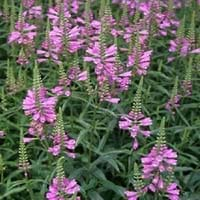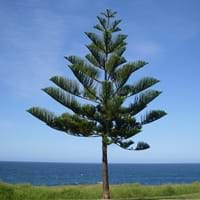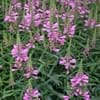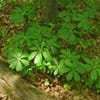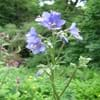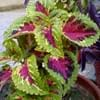Life Span
Annual
Perennial
Origin
Northeastern United States, Mid-Atlantic United States, Southeastern United States, Central United States, Canada, Mexico
Australia
Types
Shrub
not available
Habitat
Sunny Edge
Subtropical forests
USDA Hardiness Zone
3-9
9-11
Sunset Zone
A2, A3, 1a, 1b, 2a, 2b, 3a, 3b, 4, 5, 6, 7, 8, 9, 14, 15, 16, 17, 18, 19, 20, 21, 22, 23, 24
H1, H2, 17, 21, 22, 23, 24
Habit
Upright/Erect
Pyramidal
Flower Color
White, Purple, Pink, Rose, Violet
Green
Flower Color Modifier
Not Available
Bicolor
Fruit Color
Red, Green, Light Green
Green
Leaf Color in Spring
Green
Dark Green
Leaf Color in Summer
Green
Dark Green
Leaf Color in Fall
Green
Dark Green
Leaf Color in Winter
Light Green
Dark Green
Leaf Shape
Lance shaped
Needle like
Plant Season
Summer, Fall
Spring, Summer, Fall, Winter
Sunlight
Full Sun, Partial Sun, Partial shade
Full Sun, Partial Sun, Partial shade
Type of Soil
Clay, Loam
Loam, Sand
The pH of Soil
Acidic, Neutral, Alkaline
Acidic, Neutral, Alkaline
Soil Drainage
Average
Well drained
Bloom Time
Summer, Late Summer, Early Fall
Spring
Tolerances
Drought
Drought, Salt, Soil Compaction
Where to Plant?
Ground
Ground
How to Plant?
Root Division
Tip cutting
Plant Maintenance
Medium
Medium
Watering Requirements
Requires regular watering
Allow to dry out slightly between watering
In Summer
Lots of watering
Lots of watering
In Spring
Moderate
Moderate
In Winter
Average Water
Average Water
Soil pH
Acidic, Neutral, Alkaline
Acidic, Neutral, Alkaline
Soil Type
Clay, Loam
Loam, Sand
Soil Drainage Capacity
Average
Well drained
Sun Exposure
Full Sun, Partial Sun, Partial shade
Full Sun, Partial Sun, Partial shade
Pruning
Remove damaged leaves, Remove dead branches, Remove dead leaves
Prune if you want to improve plant shape, Remove damaged leaves
Fertilizers
All-Purpose Liquid Fertilizer
All-Purpose Liquid Fertilizer, fertilize every 2-3 weeks while growing
Pests and Diseases
Red blotch
Anthracnose, Branch Droop, Root rot, Yellow Leaves
Plant Tolerance
Drought
Drought
Flowers
Showy
Insignificant
Flower Petal Number
Single
Not Available
Foliage Texture
Medium
Fine
Foliage Sheen
Glossy
Glossy
Attracts
Hummingbirds
Not Available
Allergy
Not Available
Not Available
Aesthetic Uses
Showy Purposes
Showy Purposes, Used as Christmas tree
Beauty Benefits
Not Available
No Beauty Benefits
Edible Uses
Not Available
No
Environmental Uses
Air purification
Shelter for wildlife, Windbreak
Medicinal Uses
Not Available
Not Available
Part of Plant Used
Flowers
Whole plant, Wood
Other Uses
Showy Purposes
Used in Furniture
Used As Indoor Plant
No
Yes
Used As Outdoor Plant
Yes
Yes
Garden Design
Cutflower, Mixed Border, Wildflower
Container, Feature Plant, Houseplant, Screening / Wind Break, Shade Trees, Street Trees, Tropical
Botanical Name
PHYSOSTEGIA
ARAUCARIA heterophylla
Common Name
Physostegia
Norfolk Island Pine
In Hindi
Physostegia
नोरफोक द्वीप पाइन
In German
Physostegia
Norfolk-Insel Pine
In French
Physostegia
Norfolk Île Pine
In Spanish
Physostegia
Norfolk Pine Island
In Greek
Physostegia
Νησί Νόρφολκ Pine
In Portuguese
Physostegia
Ilha Norfolk Pine
In Polish
Physostegia
Norfolk Pine
In Latin
Physostegia
Insula Norfolk Pinus
Phylum
Magnoliophyta
Coniferophyta
Class
Magnoliopsida
Pinopsida
Family
Lamiaceae
Araucariaceae
Genus
Physostegia
Araucaria
Clade
Angiosperms, Asterids, Eudicots
Not Available
Tribe
Not Available
Not Available
Subfamily
Not Available
Not Available
Number of Species
Not Available
Importance of Physostegia and Norfolk Island Pine
Want to have the most appropriate plant for your garden? You might want to know the importance of Physostegia and Norfolk Island Pine. Basically, these two plants vary in many aspects. Compare Physostegia and Norfolk Island Pine as they differ in many characteristics such as their life, care, benefits, facts, etc. Every gardener must at least have the slightest clue about the plants he wants to plant in his garden. Compare their benefits, which differ in many ways like facts and uses. The medicinal use of Physostegia is Not Available whereas of Norfolk Island Pine is Not Available. Physostegia has beauty benefits as follows: Not Available while Norfolk Island Pine has beauty benefits as follows: Not Available.
Compare Facts of Physostegia vs Norfolk Island Pine
How to choose the best garden plant for your garden depending upon its facts? Here garden plant comparison will help you to solve this query. Compare the facts of Physostegia vs Norfolk Island Pine and know which one to choose. As garden plants have benefits and other uses, allergy is also a major drawback of plants for some people. Allergic reactions of Physostegia are Not Available whereas of Norfolk Island Pine have Not Available respectively. Having a fruit bearing plant in your garden can be a plus point of your garden. Physostegia has no showy fruits and Norfolk Island Pine has no showy fruits. Also Physostegia is not flowering and Norfolk Island Pine is not flowering . You can compare Physostegia and Norfolk Island Pine facts and facts of other plants too.
